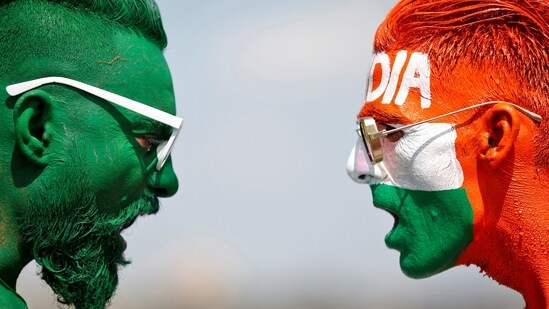A Games to Remember: Top Three Moments from the Birmingham Commonwealth Games 2022

Sashank Rajaram, an undergraduate student at Ashoka university, is a self-proclaimed writer who enjoys discussing everything from economics and global affairs to sports and films!
While the dream of winning more medals at the Olympics remains a work in progress, the Commonwealth Games (CWG), which brings together nations that were former territories of the British empire, has been a better hunting ground for Indians. The recently concluded 22nd CWG at Birmingham, England, was one such example where the 210-strong Indian contingent performed spectacularly to bring home 61 medals including 22 Golds, 16 Silvers, and 23 Bronze. Finishing 4th in the overall medals tally, India’s performance has once again sparked an interest in world sports in the country which is pre-occupied with cricket.
With the games officially over and all the athletes returning home to a grand and festive procession, it is time to look back at three of the most memorable Indian performances that will be cherished for a long time to come.
Expect the Unexpected: Women’s Four Lawn Bowls
Perhaps the most unexpected gold medal among India’s tally must be Lawn Bowls. At a time when many were not even familiar with the rules of the game, the Indian women’s contingent scripted history by winning gold through a 17-10 win over South Africa. Hailing from different corners of the country, the quartet of Pinki, Nayanmoni Saikia, Lovely Choubey and Rupa Rani Tirkey ‘bowled’ the nation with their scintillating performance and igniting a never-seen-before interest in lawn bowls. But what is Lawn Bowls, exactly?
The game involves rolling balls (called bowls) towards a smaller fixed target known as a ‘jack.’ It is an outdoor activity which is usually played on level grass around 37-38 metres. Though resembling any other regular balls, these lawn bowls are not exactly round as one side is slightly larger than the other; known as ‘bias.’ As a result, when rolled, these bowls take a curved path. Additionally, various models will have varying biases and the more pronounced the bias, the higher the rate of curvature. This enables the bowlers to pick and choose a bowl that may generate the required curvature.
The objective of the game is relatively straightforward. The goal is to roll one’s ball as near as possible to the jack. The teams must roll the bowls from 18 ends and the side with the highest points after the end of the final round is declared the winner. Seemingly simple, the games require precision and calmness during tight situations.
The final was more than exciting. In the face of challenging weather conditions at Victoria Park, India established an early lead of 4-2 and then jumped up quickly thanks to Rupa’s brilliant bowling at End 5. Carrying their form, the women played more aggressively and widened the lead to a 7-2 advantage. However, the South Africans came right back into the match and played exceptionally – hitting the jack so nonchalantly– such that they took a 10-8 lead at the halfway stage. Just when momentum seemed to be swinging towards the South Africans, the Indian women refused to throw in the towel and fought back hard. At the end of the 12th end, it was the skip – Rupa Rani – who came to India’s secure and scored an important jack to take over the lead with a 12-10.
The Women in Blue held on to their advantage and as the final bowl was rolled on the ground, the team could not restrain their emotions. When the gravity of their achievement sunk in, the entire ground gave fitting applause and showered their genuine praises on the team. As the Tricolour was raised high, the jubilance – an outcome of years of hard work and perseverance – that ran across their faces will be a picture to remember!
Breaking Traditions: Avinash Sable; Men’s 3000m Steeplechase
When Avinash Sable re-entered the dressing room after finishing 11th in the Men’s 3000m Steeplechase race at the World Championships in Oregon, he wasn’t so much fatigued as he was attempting to process what had just occurred. Running at his slowest since 2019, Sable’s timing of 8:31:75 was nearly 19 seconds off his personal best. Finding himself in the slowest steeplechase race in the world Championship history, Sable’s performance disappointed fans who expected him to better his national record and bring back a medal.
Fast forward one week and Sable was at the CWG steeplechase finals—a sport that has, quite literally, been created for the Kenyans. Their dominance has been such that ever since 1998, the African nation has recorded a clean sweep of the podium. And with three Kenyans in the fray, it seemed as though history would repeat. As the gun was triggered, the athletes burst out. Just as predicted, the Kenyans – Abraham Kibiwot, Conseslus Kipruto and Amos Serem – broke away from the pack and took an early lead. Clocking 20-21 km/hr, it was evident that this was going to be a fast-paced race. The Kenyan trio accelerated, widening the lead, and almost making the other runners non-existent. There was only one man who was even able to keep pace—Avinash Sable. Giving the Kenyans a ‘run’ for their money, Sable was placed fourth at the 1/3rd mark and seemed to be in a comfortable position. Yet, with all the Kenyans ahead of him, each of them champions in their own right, there was still some work for Sable before he could put himself up for medal contention.
As the final lap began, Sable channelled his reserve energy and suddenly pushed himself further. With a couple of long strides, he overtook Kipruto and Serum and was in a silver medal position! Only Kibiwot was ahead of him and as the athletes came around the last corner, the distance between Sable and Kibiwot narrowed. The crowd at the Alexander Stadium got behind them as they watched two gladiators fighting it out. As he jumped over the final hurdle, Sable gave it his all. When the timing was released, Sable was just 0.5 seconds slower than Kibiwot! Perhaps for the first time that a silver medallist received more attention than the gold medallist, Sable soaked in all its glory. He had broken the Kenyan hegemony over the men’s 3000m steeplechase and, in the process, also set a new Personal Best of 8:11:20.
Ever since the sudden death of his Bulgarian coach Vikolai Snasarev in 2021, Sable has become even more competent. Hailing from Mandwa in Maharashtra, Sable served in the Indian Army and had postings in the freezing heights of Siachen as well as the blistering hot desert of Rajasthan. Despite the historic win, Sable remains grounded. “But I must forget the win first. I do feel happy. But the main focus is to be better and not think that I have done something extraordinary,” says Sable who symbolises the new winning spirit of India.
Sen-Sational Gold: Lakshya Sen; Men’s Singles Badminton
Enthralling, magnificent, thrilling, breathtaking. Adjectives fail to describe the CWG Men’s Singles final between Lakshya Sen and Ng Tze Yong that had the spectators glued to their seats for more than an hour. After having defeated Kidambi Srikanth in the semi-final, the Malaysian was in fine form and had momentum on his side. However, it was the Indian who was a higher-ranked player. With the crowds equally polarised, the match promised to be a rollicking one.
Love all. Play.
The match began at a fantastic pace. Each player pulled out all the shots in their books and tried to outdo each other. The smashes, the defence, the drop shot, the fake serve, etc. were perfect. Having a narrow lead at the halfway mark, Tze Yong made Sen toil for each point, making him run from one side of the court to another. Trailing at 17-13 at one point, Sen produced some magical cross-court smashes and unpredictable drop shots to even the game at 19-19. However, the Malaysian youngster kept his nerve and boomed a huge jump smash to give himself a game point. Despite trying his all, a shuttle cock sent wide by Sen helped Tze Yong clinch the first game 21-19. He was now one game away from a Commonwealth Gold medal.
The second game, once again, was evenly fought. Both players traded points and fought their best to keep their lead. However, it was the Malaysian who seemed to have a better temperament. He made fewer errors, smashed more accurately, and seemed poised to take the win. Near the halfway stage, he led 8-6.
There are instances when people are pushed to the absolute corner and there seems to be no light at the end of the tunnel. Some succumb and throw in the towel, not able to fight it out any longer. Occasionally, however, some start burning brighter than ever. Their adversity no longer seems to bother them. The predicament would soon be forgotten. They bounce back vigorously that it would seem that they willingly got themselves entangled, only to break out of it more forcefully than ever. This was that moment for Lakshya Sen. Out of nowhere, he pulled himself up and won and played with extreme precision. He had crossed the inflexion point and was now ascending. The longer rallies, which Yong dominated, turned in Sen’s favour. A couple of consecutive points put the Malaysian on the backfoot. He committed more errors and sensing the opportunity, Sen began to play with more freedom. The effect cascaded into a major momentum change as Sen won the second game 21-9!
The match was into the final game. Both players, though exhausted, didn’t give up yet. However, with momentum on his side, the Indian seemed to be the better player and put relentless pressure on Tze Yong. He kept chipping away points and then as the game progressed, it was evident that the Malaysian was growing desperate. Finally, Sen swung his racket; a cross-court smash which closed the match 21-16.
The crowd erupted into a raucous celebration. Sen dropped his racket and put his hand over his head in disbelief. As the emotions began to sink in, he let out a huge roar before throwing the shirt to the crowd. Here was a player from Uttarakhand, just 21 years of age, who had become a symbol of Indian Men’s badminton. And this victory, perhaps the sweetest in his career so far, was a testament to his unwavering determination.








